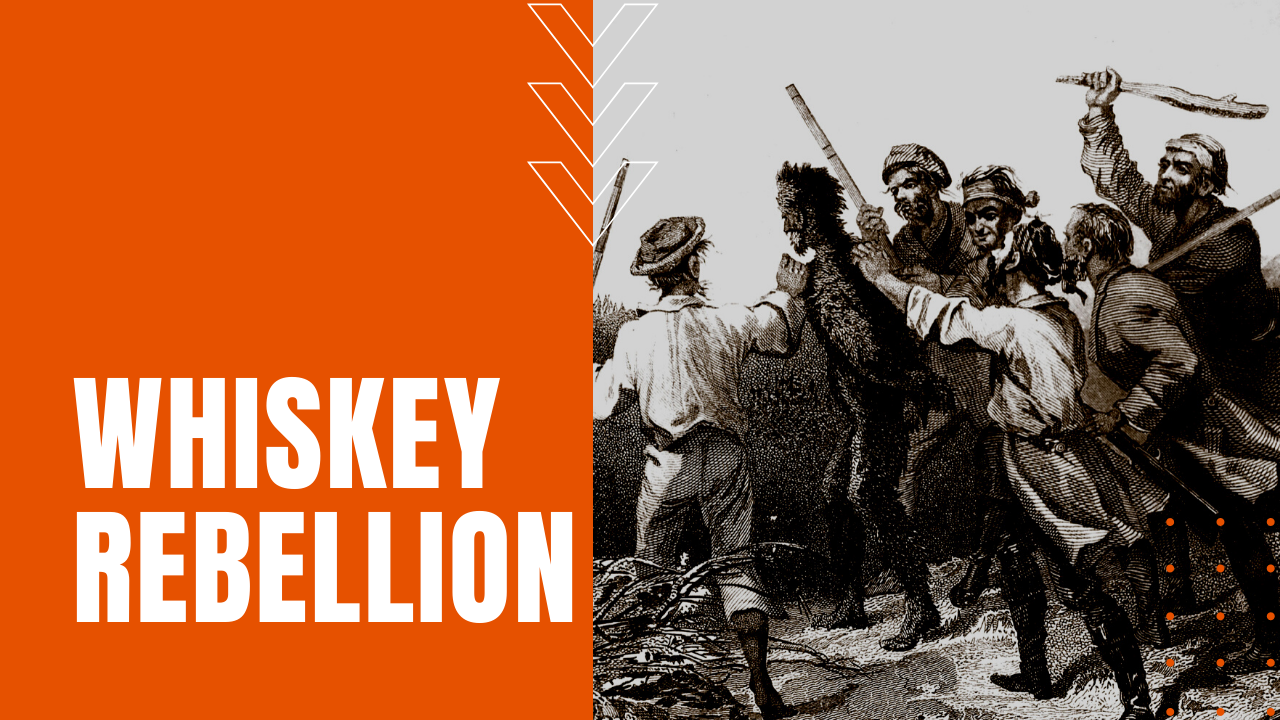Whiskey Rebellion: American Whiskey Producers Attack Federal Tax

During the Revolutionary War, individual states incurred heavy wartime debts, prompting treasury secretary Alexander Hamilton to push for a federal takeover of all war-related obligations. Despite President Washington’s opposition to a tax on whiskey, Congress passed one anyway in 1791, which fell disproportionately on smaller whiskey producers who paid higher per gallon tax rates than larger producers.
Excise Officers Ostracized and Exiled
As a result, excise officers sent to collect the tax were met with increasing defiance and growing threats of violence. On September 11th, excise officer Robert Johnson was riding through his collection route in western Pennsylvania when he was surrounded by 11 men dressed as women. The mob stripped him naked and then tarred and feathered him before stealing his horse and abandoning him in the forest.
Incidents escalated over the next several years, and in 1793, the home of Pennsylvania excise officer Benjamin Wells was broken into twice by angry protesters. In the summer of 1794, federal marshal David Lenox began the process of serving writs to 60 distillers in western Pennsylvania who refused to pay their whiskey taxes.
The Whiskey Rebellion
After a July 16th attack on wealthy landowner and tax collector John Neville’s home, Neville grabbed a gun and shot at the crowd, striking and killing Oliver Miller. In retaliation, the following day, 700 men marched on Neville’s home, and when a ten-man military detachment refused to back down to mob rule, Neville’s home and outbuildings were burned to the ground.
Less than a week later, 7,000 largely intoxicated whiskey rebels met up at Braddock’s Field east of Pittsburgh, where officials quelled the insurrectionists with several gifted barrels of whiskey. After Washington’s peace envoy to the region failed, under the auspices of the Militia Acts of 1792, Washington assumed emergency power to assemble more than 12,000 men from the surrounding states and eastern Pennsylvania, commissioning them into a federal militia.
The large and well-armed militia marched into western Pennsylvania and was met by angry citizens yet very little violence. When a countering rebel army failed to appear, the militia rounded up suspected rebels instead, despite the fact that the true rebel instigators had already fled. The men were marched to Philadelphia to stand trial, and while only two men were found guilty of any treasonous acts, Washington pardoned both men in an attempt to de-escalate tensions caused by the whiskey tax.
The federal response to the Whiskey Rebellion was widely believed to be a critical test of federal authority, one that Washington’s fledgling government met with success. The whiskey tax that inspired the rebellion remained in effect until 1802, until Republic President Thomas Jefferson repealed the tax for good, claiming that citizen protests and resistance to such a tax made it impossible to collect.
